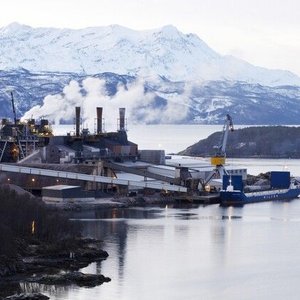One of the systems needed in nearly every feed mill is compressed air to operate equipment in the plant. The proper design and installation of a compressed air system often isn’t thought about. In this article we will discuss compressed air uses and the components of a properly designed compressed air system.
The most common use of compressed air is to actuate air cylinders powering slide gates under bins and outlets on conveying equipment. Compressed air also is used to open and close the doors under drop-bottom mixers. These operations use the air in cyclic action where the cylinder(s) are used to position the gate(s) in either an opened or closed position. Other uses are to continuously operate vibrators on equipment or to atomize liquids by being injected into the liquid to atomize it before it is sprayed on the product.
Other purposes include using hand-held nozzles on the end of a hose to blow-down and clean various areas. Blowing down causes dust in the atmosphere and should only be done when the plant is not in operation to avoid creating an explosive atmosphere. Compressed air may be used to pressurize electrical cabinets to keep dust out or cool equipment in the cabinet.
A compressed air system has three major components: the machinery that compresses the air; the compressed air distribution system; and the equipment that uses the compressed air.
Compressing the air
To compress the air, external air is drawn through an intake filter and into a compressor. The compressor is usually one of two types, a reciprocating-piston design or a rotary screw design. The piston type draws air into a cylinder where it is compressed by the piston into a high-pressure state that exits to the compressed air system. This is the same principle as an automobile engine cylinder uses to compress fuel into high-pressure. This type of compressor may be a single piston design, or a double piston design where the air is compressed in two steps.
A rotary compressor uses tightly fitting twin screws to compress the air as it travels through the screw housing. This design works as a positive displacement air pump. The screws turn constantly, and the amount of air compressed is controlled by a modulating valve on the air inlet to the compressor.
The air is compressed to the pressure needed for the plant compressed air system. The compressor has low and high-pressure switches on it. The low-pressure switch starts the air compression, while the high-pressure switch stops the air compression. The air is heated in the compression process and is hot as it leaves the compressor. This hot compressed air next passes through an air dryer to remove any moisture to provide the driest air possible to the system. The air dryer may be one of two types: a desiccant dryer or a refrigerated air cooler/dryer. The removal of moisture from the air is important as moisture in the air is detrimental to the piping system and the air operated equipment.
The third step in compressing air is to install an air receiver tank immediately after the air-drying equipment. The receiver acts as an accumulation tank for the compressed air so that sufficient compressed air is available for the system when there is high demand. It provides a smooth and steady supply of air to the system when the pressure drops to the minimum pressure set point where the compressor begins compressing air to the system and the air pressure rises back up to the maximum pressure set point. The receiver allows for having compressed air available to operate equipment for periods of time without the available air pressure dropping below the minimum pressure needed in the system.
The size of receiver needed for a compressed air system may be determined using the following formula.
V = t C pa / (p1 – p2)
V = volume of the receiver tank (cubic feet)
t = time for the receiver to go from upper to lower pressure limits (minutes)
C = quantity of free air needed to supply the system (scfm)
pa = atmospheric pressure (14.7 psia)
p1 = maximum tank pressure (psig)*
p2 = minimum tank pressure (psig)*
Psig is the pressure shown on a pressure gauge.







